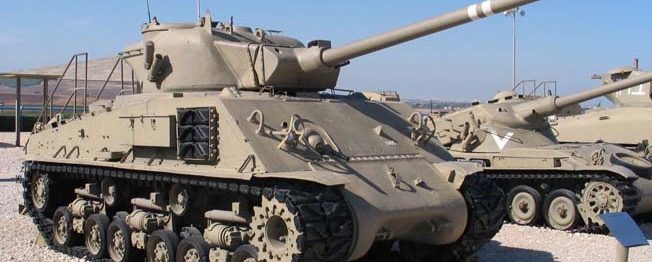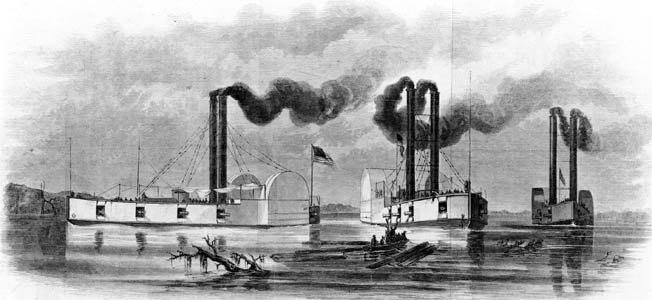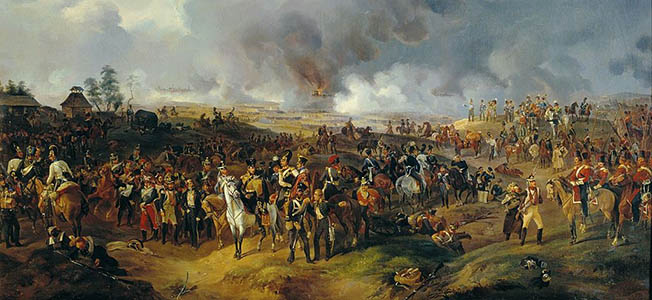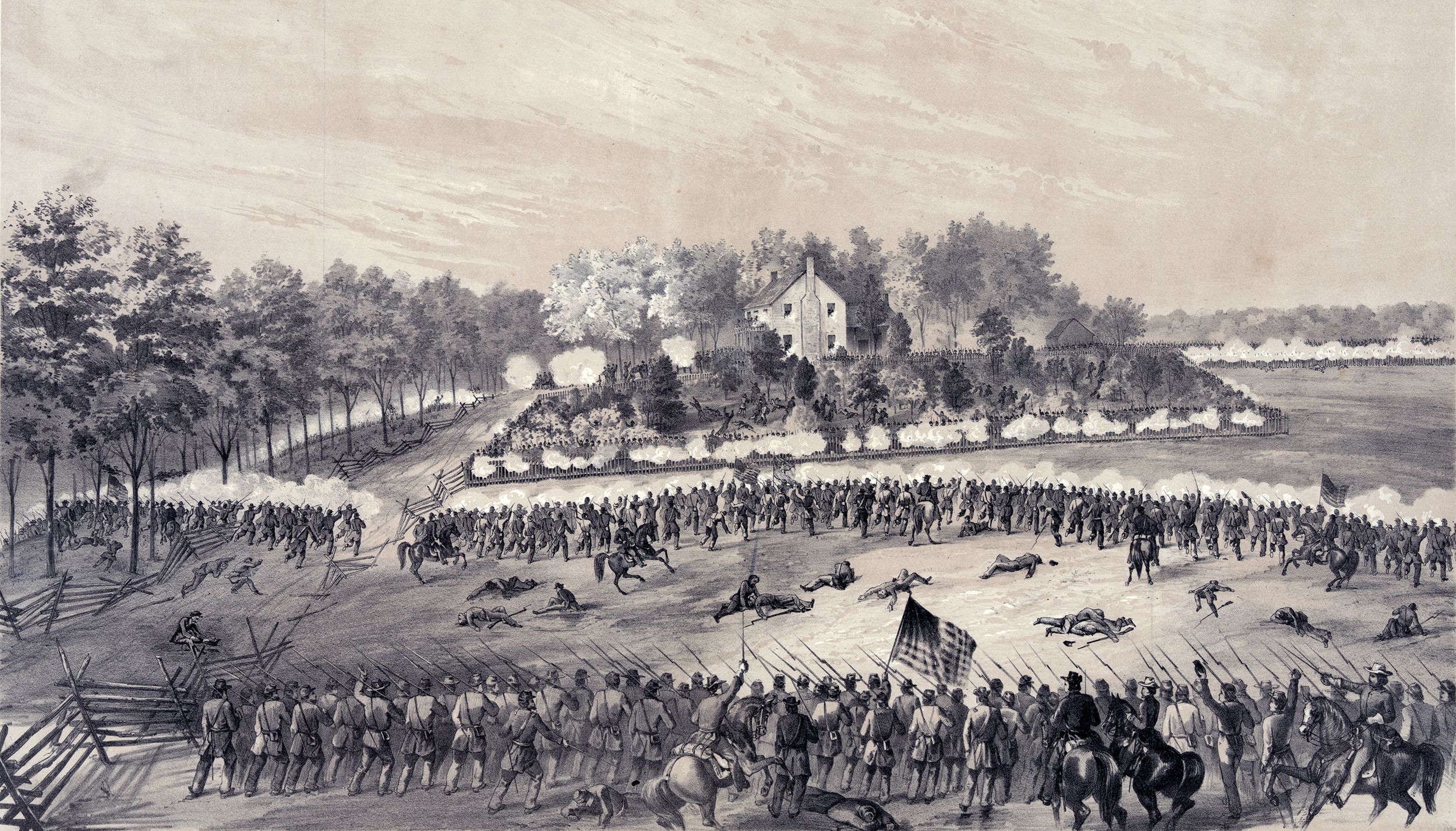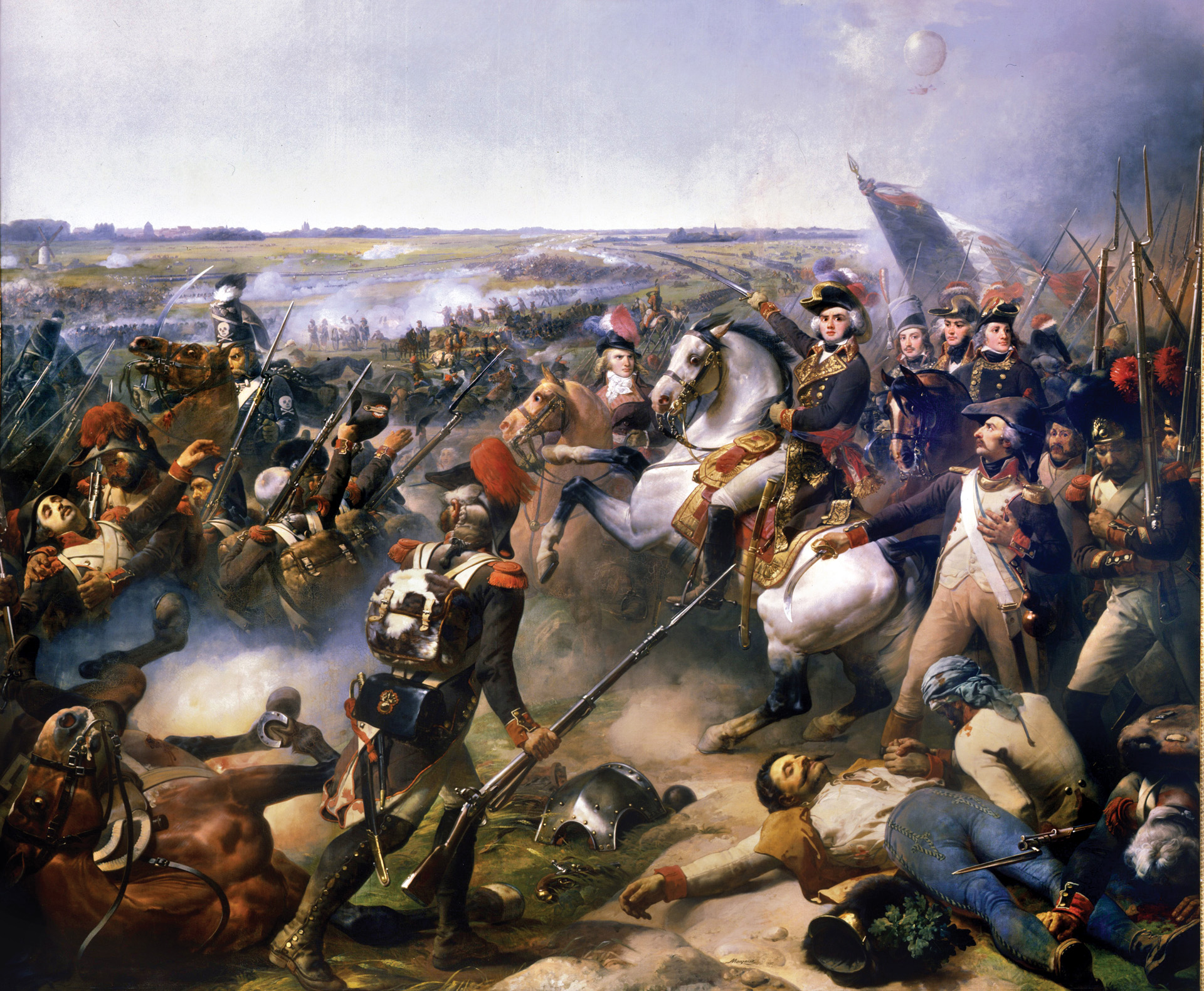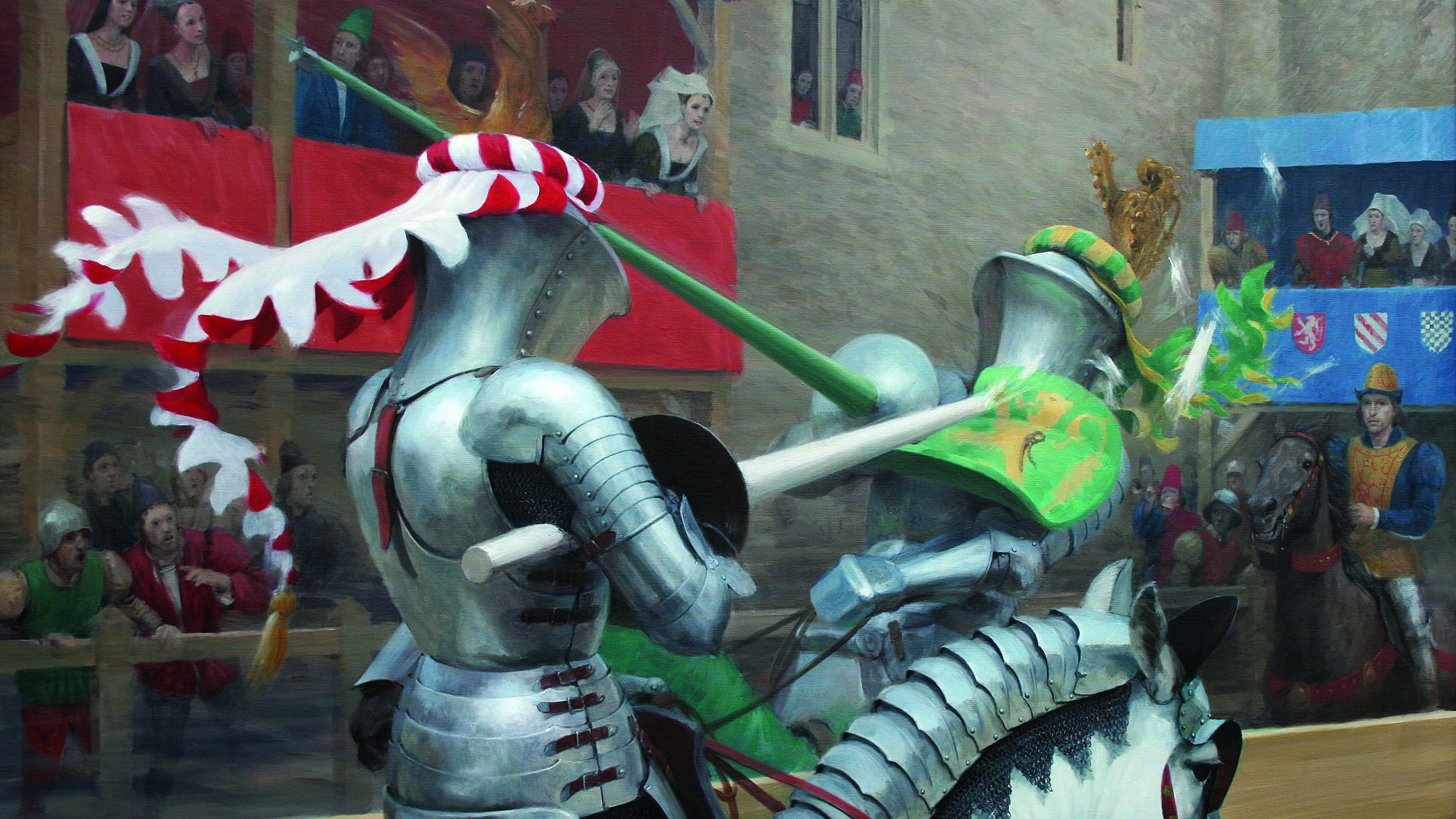By Eric Niderost
July 3, 1863, dawned clear and bright, the warm sun promising even greater heat to come. By noon, temperatures were already in the low 90s, a typically hot and humid summer day in southern Pennsylvania. The action on the ground would soon get even hotter. Five days earlier, General Robert E. Lee’s formidable Army of Northern Virginia, some 75,000 strong, had invaded the North for the second time in a year, hoping to win a decisive victory over Union forces. The 90,000-man Army of the Potomac, commanded by recently appointed Maj., was holding on for dear life.
The two armies had been fighting around the small town of Gettysburg for two days and during much of that time the Confederates had seemed to be on the brink of success. Victory had so far proved elusive, but Southern morale remained high in spite of horrific casualties. A combination of poorly coordinated attacks, missed opportunities, and a Union army stubbornly defending its own soil had prevented Lee from achieving his goals. Nevertheless, the Virginia-born commander was firmly convinced that one more determined attack, this time on the Union center, would give his army the epochal victory that thus far had proved maddeningly elusive.
Lee had been sick with diarrhea, and his physical discomfort possibly clouded his judgment. More than that, he was a victim of his own success. A brilliant tactician, his past victories over inferior Union generals had bred overconfidence, and that overconfidence in turn fostered a certain intransigence whenever his ideas were challenged. Believing that Meade had weakened his center to reinforce his battered flanks, Lee was convinced that a massive attack on the Union center would cut the enemy army in two. Lt. Gen. James Longstreet, commander of the army’s I Corps, respectfully disagreed. “I have been a soldier all my life,” he told his commander. “I have been with soldiers engaged in fights by couples, by squads, companies, regiments, divisions, and armies, and should know as well as anyone what soldiers can do. It is my opinion that no 15,000 soldiers ever arrayed for battle can take that position.” Longstreet’s passionate and well-reasoned pleas fell on deaf ears. Lee would attack.
The Army of the Potomac was in a strong defensive position just south of Gettysburg. The Union line resembled a fishhook, with the barbed point embedded in a small rise that locals called Culp’s Hill. From Culp’s Hill, the fishhook curved south, running along a low backbone of land named Cemetery Ridge. The eye of the fishhook was anchored on two wooded hills, Round Top and Little Round Top. The naturally formidable position gave the Federals the advantage of interior lines, where reinforcements could easily be shifted to various points as needed. By contrast, the Confederates were strung out along a concave line that made communication and coordination of attacks exceedingly difficult.
On the morning of July 3, Lee rode along Seminary Ridge to make inspections and issue last-minute orders for the coming assault. He was a figure of great respect, even awe, to the men he led, an icon of the Confederacy. Lee had an indefinable quality, a charisma that set him apart from other commanders. Abstemious in his personal habits, courtly and dignified, the soft-spoken aristocrat seemed born to command. Riding his famed warhorse, Traveller, Lee was joined on his tour by Longstreet and Maj. Gen. George E. Pickett, a fellow Virginian. Pickett’s 4,500-man division was still fresh; it would be a key element in the unfolding drama. The generals passed long lines of infantry, who were ordered not to cheer or make any kind of demonstration, lest the enemy get wind of what was about to happen. Soldiers scrambled to their feet as Lee passed, and many removed their hats as a token of mute but heartfelt respect. Lee acknowledged the tribute with a slight nod and a touch of his brim. The bond between the white-bearded general and his men needed no words to be fully expressed.
Lee drew in his reins and raised his field glasses toward the Union lines, roughly a mile in the distance. He focused on a clump of oak trees that was plainly visible even at a distance. Those trees would be the focal point of the entire assault. The attacking units would converge on the soon-to-be-famous “copse of trees.” Marching under heavy enemy fire was going to be difficult, but at least the Confederate officers leading the assault would have a central location on which to concentrate. Generals Lewis Armistead and Richard Garnett, also watching from atop Seminary Ridge, were decidedly uneasy about their men’s chances. “This is a desperate thing to attempt,” Garnett said quietly. “Yes, it is,” Armistead agreed. “But the issue is with the Almighty, and we must leave it in His hands.”
The men of the 69th Pennsylvania Volunteer Infantry were posted near that same clump of trees, blissfully unaware of Lee’s steely scrutiny. Part of Maj. Gen. Winfield Scott Hancock’s II Corps, they occupied part of the Union center, the upper end of the fishhook. Most of them hailed from Philadelphia’s working class, rough-and-ready Irishmen who were familiar with both hard work and ethnic prejudice. The 69th was posted on the forward slope of Cemetery Ridge, along a low stone wall that abruptly zigzagged 90 degrees, the sudden shift causing the area to be nicknamed “the Angle.” This wall was not a particularly formidable barrier, rising only about two feet above the rich Pennsylvania soil. A few fence rails had been piled on top, adding to the fence’s height but not doing much to increase its value as a shield.
There had been some desultory fighting around Culp’s Hill earlier in the day, but now an eerie, almost deafening silence descended on the battlefield. It was literally the lull before a storm—one Union private remembered that it was “almost as still as Sabbath day.” The silence seemed ominous, and the Federal soldiers shifted uneasily in their blue wool coats. Little did they know that they were sitting on what amounted to a Rebel bull’s-eye.
Earlier that morning, Brig. Gen. Alexander S. Webb, commanding the Philadelphia Brigade, had posted two companies of the 71st Pennsylvania to the immediate right of the 69th, between them and the corner of the Angle. The rest of the 71st Infantry continued along the wall after it made its zigzag shift. The left flank was held by a somewhat understrength 59th New York. The 72nd Pennsylvania, Webb’s strongest regiment, was posted in the rear as a mobile reserve. The Irishmen could take some comfort in the fact that they had ample artillery support, although sometimes the guns could prove a mixed blessing. If you weren’t careful, you might fall victim to friendly fire, and the artillery units often attracted the unwanted attention of enemy batteries as well.
Lieutenant Alonzo Cushing’s Battery A, 4th U.S. Artillery, was positioned about 150 feet behind the 69th’s right companies. These gunners were Regular Army, armed with six three-inch rifled cannon. Lieutenant William Arnold’s Battery A, 1st Rhode Island, was posted to Cushing’s right, and behind the eight companies of the 71st Pennsylvania. Another battery, Lieutenant Frederick Brown’s Battery B, 1st Rhode Island, was placed to Cushing’s left, on the other side of the clump of oaks.
It was now just past midday, and the weather was hot and almost suffocating. Each man tried to find shelter from the broiling sun; those wearing short-brimmed kepis or forage caps were particularly exposed to the merciless rays. Some men ducked under the oak trees, clustering beneath the welcome pool of leafy shade. Rifles were upended, bayonets stuck into the ground, and corners of blankets tied to the triggers, creating impromptu tents. The men were tired, dirty, and sweaty, their faces grimy and blackened with gunpowder. Water was scarce, and many of the men were parched with thirst. But above all, the 69th Regiment was hungry, not having eaten in two days. Some veterans managed to scrounge a few tooth-breaking hardtack biscuits, but most had to endure stomach pangs so acute that one soldier called them “a wolf’s hunger.”
A gagging, nauseating smell added to the discomfort of hunger and sweltering heat. It came from the unburied bodies of Confederate dead, Georgians from Brig. Gen. A.R. Wright’s brigade. Scores of bodies lay just beyond the regiment’s position, corpses with blackened faces and rapidly swelling torsos decomposing in the torrid heat. Dead artillery horses, their legs splayed in grotesque postures, added to the noisome stench.
On the shady ridge across the way, Lee was finalizing his plan of attack. Writing with his customary brevity, Lee ordered that “General Longstreet will make a vigorous attack on his front, General [Richard S.] Ewell will threaten the enemy on the left, or make a vigorous attack, should circumstance justify it; General Hill will hold the center at all hazards.” Lee also envisioned Stuart and his cavalry—the prodigal general having finally returned to the army the day before—sweeping around the Union rear and exploiting the hoped-for breakthrough in the Federal center.
At dawn, Federal troops had attacked Ewell’s men around Culp’s Hill. This was not an all-out offensive; its main objective was to recover a series of trenches lost the day before. After six or seven hours of fighting, the bluecoats not only regained the trenches, but also drove most of the Confederates off Culp’s Hill. Ewell was not going to be able to threaten the enemy right as Lee had planned. This was a setback, but a minor one, and Lee remained optimistic. He had an ace in the hole. Before the main attack began, the Union line would be softened up by a massive Confederate artillery barrage.
Overall responsibility for coordinating the barrage fell squarely on the shoulders of Colonel E.P. Alexander, a 28-year-old Georgian who before the war had served as an artillery instructor at his alma mater, the United States Military Academy at West Point. Alexander was lukewarm about the whole enterprise: “Even if this [attack] is entirely successful it can only be so at a very bloody cost,” he wrote to Longstreet. The I Corps commander agreed wholeheartedly, but he knew that Lee would not change his mind. Longstreet wrote back: “Let the batteries open. Order great care and precision in firing.”
No less than 143 Confederate guns would take part in the cannonade, which started at precisely 1:07 pm Soon the Federal artillery replied, the combined roar of nearly 300 Union and Confederate guns producing the greatest artillery duel ever heard on the North American continent. The rumbling, man-made thunder could be heard in Harrisburg, 140 miles away. Cannon muzzles spouted great tongues of flame with each report, along with clouds of acid, dirty-white smoke. When a gun was fired, its carriage kicked back on its wheels and dug a groove with its tail in the unresisting soil. There were two types of artillery at Gettysburg: smoothbore cannon and rifled guns. The smoothbores were mostly bronze, Model 1857 Napoleons that fired a powder-filled explosive shell or 12-pounder solid shot. A typical rifled gun was the 2.9-inch Parrott Rifle, whose barrel featured twisted grooves that made for greater accuracy. It fired an elongated shell with an effective range of over 2,000 yards.
The cannonade grew in intensity, an ear-splitting symphony of death and destruction that was merely an overture for the greater terror still to come. After an hour, cannon smoke began to shroud the valley, thick skeins of gray-white cotton that turned the sun into an angry red disk suspended in the sky. The unnatural fog added to the horror, because death-dealing solid shot and shells could not be seen coming. At first the Confederate cannonade was very effective. Torrents of shells rained down on the Union positions, and when they exploded they caused horrific casualties. One shell went off near the 1st Rhode Island Artillery, instantly killing two gunners and horribly wounding another. One of the dead men had the top of his head blown off, exposing a mass of blood, brains, and shattered skull tissue. The wounded man’s arm had been nearly severed, the limb barely connected to his body by a few muscles and tendons. Blood pumped from the raw, gaping wound with each heartbeat.
The effect of these horrors, coupled with the noise, smoke, and flame, was designed to cripple an enemy’s will to resist. There was nothing the Union infantry could do except to lay low, hug the ground, and pray that the ordeal would end soon. Recalling those terrible moments, a sergeant in the 1st Minnesota admitted, “We had been badly scared many times before this, but never quite so badly as then.” Just when things seemed to be at their worst, a miracle occurred—at least it seemed like a miracle to the Union infantry huddled down and trying to stay out of harm’s way. Confederate shells, previously so accurate, began overshooting their intended targets. The Rebel artillery played havoc with rear areas, but the Union infantry and, more importantly, the Union artillery was largely spared. When the Confederate infantry finally attacked, it would be facing the full fury of the uncrippled Federal guns.
A flurry of shells exploded around Meade’s headquarters, one shot narrowly missing the general as he stood by an open door. Another shell tore up the outside steps, while still another carried away part of the portico. When Meade and his staff officers went to mount their horses, they found that a shell had killed them all. The eviscerated mounts were still hitched to a nearby fence rail.
Various explanations have been given as to why the Confederate artillery became so inaccurate. The heavy, fog-like smoke made distances and ranges hard to judge, and the constant recoils dug deep trails in the ground, with a resulting loss of accuracy. The shell fuses were also partly to blame. The Richmond armory had been temporarily shut down, and the fuses the Rebel gunners were using that day were from an armory in Charleston, S.C. Since they were not used to the slower-burning Charleston fuses, the artillerymen miscalculated lengths and trajectories.
Alexander knew that his guns could not sustain such a high rate of fire indefinitely. He dashed off a hasty note to Longstreet, urging him to begin the infantry attack. “If you are coming at all,” Alexander wrote, “you must come immediately or I cannot give you proper support.” Pickett and Longstreet were watching the artillery barrage when a rider delivered Alexander’s message. “General, shall I advance?” Pickett queried, his eyes bright with anticipation. Longstreet could not bring himself to answer; he merely nodded his head in reluctant assent. “I shall lead my division forward, sir,” Pickett responded, then galloped away to begin the attack.
Pickett was a southern cavalier in every sense of the word, a man who almost seemed to have stepped from the pages of an Alexander Dumas novel with his dark moustache, goatee, and shoulder-length hair. Here was D’Artagnan in the flesh; his “long ringlets flowed loosely over his shoulders, trimmed and highly perfumed; his beard likewise curling and giving the scent of Araby.” In theory, Pickett’s men were fresh, but “fresh” was very much a relative term. While it was true that his own division had not yet been engaged, many of the other units had been terribly mauled on the first day of battle. Lee did not fully realize just how badly hurt some of these regiments were until it was too late. The 26th North Carolina, for example, had suffered greatly on the first day. At the beginning of the battle, the regiment had around 800 men present for duty. By sunset, 588 of them were dead or wounded.
Major General Henry Heth’s division, of which the 26th North Carolina was a part, had suffered some 40 percent casualties, yet Lee selected them for the final make-or-break effort. Maj. Gen. Dorsey Pender’s division, now commanded by 61-year old Maj. Gen. Isaac Trimble, had suffered just as much. When Lee and Trimble were inspecting the troops that morning, Lee noticed that many of the men were wearing bloodied bandages. Appalled by the sight of hundreds of bandaged heads and hands, he exclaimed, “Many of these poor boys should go to the rear; they are not able for duty.” Lee scanned the thinned ranks for familiar officers. “I miss the faces of many dear friends,” he said. Then Lee rode off, casting a farewell glance toward the troops and muttering, almost to himself, “This attack must succeed.”
Longstreet’s advance finally got under way around 3 in the afternoon. When the men were all formed into ranks, the Confederate line stretched a mile in length. Brig. Gen. James L. Kemper’s men made up Pickett’s right-front brigade, while Brig. Gen. Richard B. Garnett’s troops formed the left. Brig. Gen. Lewis A. Armistead’s brigade was just behind Garnett’s in close support. The void on Pickett’s left would be filled by Heth’s division, but since Heth had been wounded his place had been taken by Brig. Gen. James Johnston Pettigrew. Two brigades from Pender’s division were assigned to support Pettigrew’s effort. Brig. Gen. Cadmus Wilcox’s brigade and Colonel David Lang’s brigade were placed on Pickett’s right to block any Union flanking movement.
Although Longstreet and others later claimed that 15,000 infantry went forward that day, the actual numbers were much smaller. Death, wounds, disease, and desertion had made inroads in the ranks, although many of the walking wounded had rejoined their regiments. Something on the order of 12,000 men took part in Pickett’s advance. Most of these men were veterans who knew full well the risks they were facing. Some officers tried to bolster the men’s courage with speeches and exhortations, others simply led them in prayer. Armistead turned to the color-bearer of the 53rd Virginia and asked, “Sergeant, are you going to put those colors on the enemy’s works yonder?” “Yes, General,” the noncom replied, “if mortal man can do it, it shall be done.”
The Confederates marched forward as if on parade, dressing their ranks and keeping the proper alignment. Long lines of men moved across the gently rising farmland at a steady pace, a measured 90 steps per minute. The men were dressed in gray or butternut-colored coats, and some sported kepis or high-crowned headgear called beehive hats. Most of the infantry were dirty and sweaty from ceaseless marching and the exertions of battle, but their guns were kept immaculate and in perfect working order. Some soldiers were ragged scarecrows, their clothes patched and worn, their feet clad in roughshod “utility brogans;” some were even barefoot. Not all units conformed to the homespun Rebel stereotype. The 7th Carolina, for example, had just received new uniforms and was well dressed that day.
Whether the men looked like hoboes or parade-ground regulars, every one of them was a soldier, bravely determined to see things through. It was an awe-inspiring spectacle—the long, gray mass surmounted by red Confederate battle flags waving in the breeze. “Up, men, and to your posts!” cried Pickett. “Don’t forget today that you are from old Virginia!” “Look at my line,” called Armistead. “It never looked better on dress parade.” At the other end of the line, Pettigrew called out to one of his regimental commanders, “Now, colonel, for the honor of the good old North State, forward!” Among the ranks, a different cry went up. “Goodbye, boys,” the men called to one another as they set off across the field.
For a moment all was silent. Then the Union artillery opened up, pounding the Confederates with a firestorm of shot and shell. Round shot punched into the ranks, flinging men to the ground like rag dolls. Shells screamed into the earth with a dull thud, fusing, hissing, and sputtering before exploding into great mushrooms of smoke and flame, tearing bloody gaps in the gray lines. In Garnett’s division, 10 men were killed or wounded in a single shellburst. Yet still they came on. Some of the men lowered their heads as though they were walking into a natural storm, not a man-made one. “Come on, Johnny. Keep on coming!” the Union troops shouted across the line.
At a prearranged signal, Pickett’s division executed a “left oblique,” a complicated maneuver designed to maintain the link with Pettigrew’s men and prevent a fatal drift to the right. The Southerners halted under fire and changed direction, the whole operation being accomplished in two or three minutes. The Union troops watching across the way marveled at the Rebels’ coolness. They were, one Northern officer conceded later, “a damned brave set of fellows.” The Confederates were approaching the Emmitsburg Road, a country thoroughfare about 250 yards from the Union line. Its road bed was a few feet below the surrounding ground, with two high rail fences running parallel to it. The 7th North Carolina’s experience was a typical one. The first fence they encountered was largely pulled down, allowing the men to move into the road, but the second fence was largely intact. There was nothing to do but climb over it, a task easier said than done when Union rifle fire was added to the continuing artillery cascade.
When the mass of Confederates reached the Emmittsburg road, the men in the 69th Pennstvania dropped to one knee and began pouring volley after volley into the surging gray ranks. The Rebels replied, but their irregular, hesitating fire was far less effective. On the left flank, Pettigrew’s attack was being squeezed and shredded by enemy fire. Union batteries on Cemetery Hill opened up with a vengeance, 29 guns spitting a hurricane of solid shot and shell. Colonel John Brockenbrough’s brigade received the brunt of the punishment. About this same time, the men of the 8th Ohio began blasting the Rebel flank. It was all too much, and Colonel Joseph Mayo’s 3rd Virginia suddenly broke and ran to the rear. The majority of Pettigrew’s men, however, held firm and continued to advance with heavy casualties. An audible groan, loud enough to be heard over the battle noise, arose from the Confederate ranks.
On the Union right, Brig. Gen. George J. Stannard’s Vermont brigade took a leaf from the 8th Ohio’s book, marching out and firing into the vulnerable flank of Pickett’s division. Kemper’s brigade was taking more than its share of the punishment. The men did not break, but Kemper himself rode back to Armistead, pleading, “General, hurry up, my men can stand no more.” Armistead turned to a nearby officer and said, “Colonel, double quick.” At his command, the brigade started to rapidly walk, then run, toward the developing maelstrom.
The Union flank attacks had narrowed the Confederate front to perhaps 500 yards, and the Emmitsburg Road fences had completely disordered the once-precise ranks. The soldiers bunched up in a seething, wedge-shaped mass of humanity, 15 to 30 men deep. Command structure vanished with the ordered ranks. Pickett’s and Pettigrew’s men mixed together, the lines forming a perfect target for the ravenous Union artillery. As the gray infantry closed, Union gunners switched to double shots of canister—lethal containers filled with iron balls. When discharged, the containers broke apart and rained their loads shotgun-fashion into the dense mass. This was artillery horror at its most extreme, with victims torn apart and disemboweled by the deadly metal spray.
Armistead coolly drew his sword and stuck his black slouch hat on the point, raising the blade high as a rallying point to his men. He was the last brigadier in Pickett’s division left on his feet; Kemper was wounded, Garnett killed. The surviving Confederates were converging on the Angle. Cushing and his 4th Artillery gunners had manhandled two 12-pounder guns forward to the stone wall to greet the arriving Confederates with hot blasts of canister. The Southerners, screaming their Rebel yells, overran the guns and killed the 22-year-old Cushing, who was posthumously promoted to lieutenant colonel for his work that day. Armistead stepped over the stone wall with his men, waving his sword and crying, “Give them the cold steel!” A Confederate breakthrough seemed close at hand.
Several companies of the 69th Pennsylvania suddenly found themselves inundated, small blue islands in a surging gray sea. Company F was totally engulfed, and soon every man was dead, wounded, or a prisoner. Company D made a stand, shooting at Confederates at point-blank range and parrying enemy bayonets with clubbing gun barrels. Company D’s forlorn stand saved the remainder of the regiment from being enveloped. The rest of the 69th managed to withdraw from the stone wall, at least for a few feet, and continued the momentarily unequal contest.
Most of the 71st Pennsylvania had fallen back in disorder, but the 72nd Pennsylvania remained poised on the crest of Cemetery Ridge. Fingers of flame laced from Union muskets as the regiment stubbornly traded volleys toe-to-toe with the Confederates at the Angle. Webb, who had just taken command of the Philadelphia Brigade a few days earlier, vainly tried to get the men to advance, but they steadfastly refused. (Many did not recognize their new commander.) Disgusted, Webb walked over to what remained of the 69th to encourage them in their fight. A Confederate bullet grazed his thigh, but Webb made it a point to walk, not run, to the struggling Irishmen. A general—particularly a new one—had to show firmness in the face of a danger.
About this same time, II Corps commander Hancock rode over to Colonel Arthur Devereaux, who found his subordinate in a high state of agitation. They couldn’t see the Angle from this position, since the oak grove blocked their view, but Devereaux could recognize all the telltale signs of trouble, including panicked fugitives streaming for the rear and a swelling chorus of rifle fire mingled with the shouts and curses of fighting men and the screams of the wounded. Devereux turned to Hancock and shouted over the din, “They have broken through; the [enemy] colors are coming over the stone wall! Let me go in there!” Hancock quickly nodded his assent, adding unnecessarily, “Go in there pretty damned quick.”
Devereaux led his 19th Massachusetts forward; the New Englanders soon were joined by the 42nd New York. The combined fire of the various Union regiments now entering the fray proved too much for the Confederates at the Angle. Armistead was hit twice, falling near one of the Union cannon. Once he was out of action, the heart seemed to go from the heroic charge—it was if Armistead’s wounding had broken a magic spell. Suddenly the few score Confederates who somehow had passed over the stone wall unhurt realized the terrible predicament they were in. Those who could not escape back to the Southern lines simply reversed their weapons and surrendered. There was no shame in that; each man at the Angle had done his duty against impossible odds.
Pettigrew’s part of the assault fared no better, and in fact never reached the Union line at all. The color-bearer of the 26th North Carolina seemed to have a charmed life; he still carried the regimental flag forward, even though such men were usually the first ones to go down. Soon the color-bearer was alone, except for one sergeant. By this time the Union soldiers behind the wall, admiring the man’s courage, refused to shoot him. He marched right up to the stone wall with his regimental standard, then stopped as if waiting for the bluecoats to make the next move. For a few moments—it must have seemed like an eternity—the Union soldiers simply stared at the man. Then one Federal reached out a hand, saying, “Come over to this side of the Lord,” and pulled the color-bearer across. The North Carolinians surrendered. In all, only 90 men who made the charge escaped death, wounds, or capture at Gettysburg—an attrition rate of 88 percent.
Pickett’s charge had failed; Lee’s grand design was now in ruins. The entire field in front of the Union center was carpeted with dead and wounded Confederates. Scattered clusters of survivors painfully limped back to their lines. Lee hastened to accept full responsibility for the debacle. “It is all my fault,” he said—and it was—as the survivors finally gained the relative safety of Southern lines. Pickett rode up, his face a frozen mask of shock, sadness, and loss. The dashing, swashbuckling cavalier was no more; in his place was a man who realized, perhaps for the first time in his life, the true cost of war. “General Pickett,” Lee remarked, “place your division in the rear of this hill and be ready to repel the advance of the enemy.” “General Lee,” Pickett responded, in voice hard with grief and tinged with accusation, “I have no division.”
It was no hyperbole. The Confederates as a whole lost 4,900 men in the charge; Pickett himself lost half of his division. Two of his three brigade commanders were killed outright—Armistead would die of wounds a few days later—and one was badly wounded. All 13 of his regimental commanders were killed or wounded. A Virginia captain spoke for many when he wrote, a few days after the battle, “We gained nothing but glory, and lost our bravest men.” Lee, unable to fully grasp the extent of his defeat, simply muttered,“I thought my men were invincible.” The failed attack known to history as Pickett’s Charge showed Lee and the rest of the world just how wrong he was.
